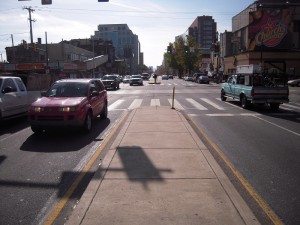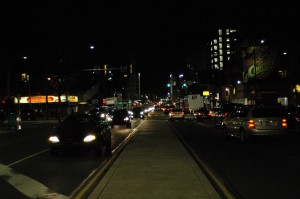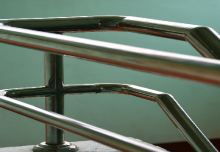It should come as a surprise to no one that night driving is markedly more dangerous than driving during the day. The night presents a number of additional hazards that are not present under normal daytime driving conditions. Nighttime conditions compromise our vision in several ways, including poorly lit roads, decreased visibility and glare from other vehicles. In fact, a driver’s visual acuity at night is a mere 30 percent of what it is during the day. Subsequently, approximately one third of car accidents occur at night. Although we’re sure you are familiar with what it looks like driving at night, see the below comparison of the same intersection during the day and at night. I think we can all agree that this intersection would be much easier to navigate in the daytime conditions.

Day

Night
Despite the presence of the external hazards mentioned above, many nighttime accidents are caused by controllable vision impairments. A recent article in AAA Traveler discussed several measures motorists can take to improve their vision when driving at night:
-
Use your rearview mirror’s night setting
Many people are not aware that their rearview mirror has a night setting. Although some car models have rearview mirrors that make adjustments automatically, many vehicles require this to be done manually. In order to switch your rearview mirror to the night setting, you will need to locate the tab under the mirror and flip it up. You will notice that you can still see the headlights of cars behind you, but the light is much dimmer and allows you a better view of the road behind you.
-
Proper headlight lens maintenance.
Over time, the effects of the environment (road debris, pollution, age, etc.) can put significant wear on the plastic lenses that cover your headlights. This reduced clarity can render your headlights virtually ineffective. You can use a headlight lens restoration kit to easily restore the clarity of your lenses. Additionally, cleaning your headlights after driving in inclement weather will keep dirt, film and grime from building up, maintaining the effectiveness of the lenses.
-
Check your wiper blades and windshield wiper fluid.
Wiper blades and windshield wiper fluid are crucial to driving visibility. Windshield wipers remove rain and snow from your windshield, and wiper fluid assists in removing any accumulated film. Be sure to check your windshield wiper fluid levels regularly and replenish when necessary and to replace worn wiper blades. It is generally recommended that wiper blades be replaced every six months to a year or as soon as you notice a difference in driving visibility.
-
Replace burnt out light bulbs.
When it is necessary to replace headlight bulbs, AAA recommends changing bulbs in pairs to maintain uniform illumination. You may also opt to invest in high performance light bulbs that put considerably more light on the road than the traditional halogen bulbs.
-
Clean your vehicle’s glass and mirrors.
Your windshield is not the only glass on your car that can accumulate dirt and film. Your vehicle’s side view mirrors, rearview mirrors and windows should be cleaned regularly as well since buildup in these places can also reduce your visibility.
Anytime you are behind the wheel of a car, there is a certain level of risk that comes along with operating a vehicle. Conditions that are less than ideal, such as nighttime and inclement weather, present added hazards. However, there are simple measures that you can take to reduce those risks and increase the safety of yourself, your passengers and others on the road.






